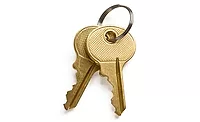Key Control Drives Fleet Management Operations
The overall development and availability of a wide range of operational tools for the fleet management market provides organizations with more convenience – and savings – in managing vehicles. For most every aspect of fleet management between acquisition and disposal, including profiling, dispatch, diagnostics, tracking, security and remote control, there is now an application available to help improve efficiencies.
Among those that have been most compellingly demonstrated is the use of key control and management solutions to store and track keys. Every time a key cabinet is accessed to either remove or return a key, the activity is automatically recorded, including time, date and identity of the individual accessing the cabinet. These control activities can improve efficiencies and save money in a number of ways:
Accountability– Whether the application is an auto dealership, a public utility with commercial repair vehicles or a university campus where cars are available for use by staff on official school business, information as to who has used a vehicle and when or who currently has keys to a vehicle is essential. Using key control solutions, administrators can easily check the automatically recorded access activity records to determine who last used the vehicle if it is returned damaged or with unusually high mileage or if it was utilized without proper authorization. To help ensure accountability or compliance with company policies, priority email alerts can be sent to management to inform them of the whereabouts of specific keys. The system’s electronic monitoring capability will help prevent an employee from inadvertently taking a key home at the end of the day instead of returning it to the key cabinet.
Convenience– Automated key control systems have grown in popularity not only because they are vastly more accurate than manual log books but also because of their convenience. Features such as illuminated key slots, biometric access, instant release and helpful prompts all make the user experience friendlier, faster and more convenient. Additionally, networked systems allow keys to be returned to any fleet key cabinet in the system. This makes it easier to track a vehicle that has been returned to a different location from where it was picked up. The system software will record the location and time so anyone looking for that vehicle will know where it – and its keys – are currently located. This benefit allows vehicles to be moved around as needed.
Tracking / Reporting– Every time the key cabinet is accessed, the activity is automatically recorded. The information can be compiled in a variety of formats for analysis or investigative purposes such as tracking mystery mileage. Depending on the information needed, management can review daily, weekly and even hourly sales reports. In an automotive dealership, the accumulated data of key usage can be analyzed for inventory effectiveness as well as sales effectiveness. Slow movers can more easily be identified as can vehicles which are shown the most or the least. With this kind of valuable information, management can narrow down the local market and identify the types of vehicles that are selling in the area and bring in more of that type of vehicle.
Scheduling– Fleet operations that network their key control systems can experience additional benefits in managing vehicle usage. For example, scheduling can be used to ensure that drivers can’t simply grab the newest car on the lot while older cars sit unused. Keys can be reserved for specific vehicles such as multi-seat vans to ensure that the vehicle is available when needed. In a dealership, this feature can be used to ensure availability for a scheduled test drive.
Security– Lost or missing keys represent one of the biggest financial threats and an effective, centrally controlled key management system can help minimize the potential for damages. Keys are attached to a system key fob and are securely stored in a locked, tamper-proof automated key cabinet. The key fob helps to thwart any thief who would attempt to keep the key after test driving a demo car and replace it with a counterfeit key in order to return later and drive off with the demo car.
Key cabinets are equipped with alarms that can be set to alert management under a range of conditions such as the use of force to gain access or remove a key, three consecutive invalid user codes, a door left open for longer than a user-selected interval, power failure, a key missing or not returned on time or a key returned by the wrong user.
For today’s fleet management operations, key control solutions are essential.
Looking for a reprint of this article?
From high-res PDFs to custom plaques, order your copy today!







